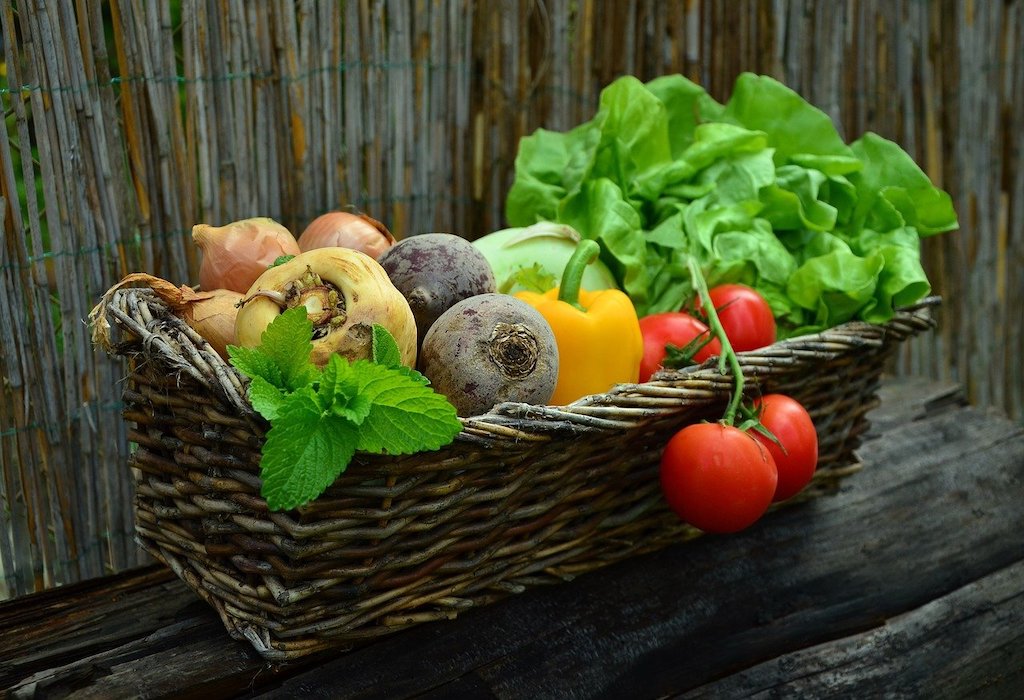
August is a fabulous time for all gardeners! The explosion of colour, scent and texture is a fiesta for the senses. But above all, allotment gardeners love this time of the year. Harvest is finally here. Finally, all the hard work from the spring is paying off.
Harvesting
Just what you will harvest now depends on what you sowed earlier. I tried to grow carrots this year (again). Alas, to no avail. I don’t know what it is about me and carrots, but I have never managed to grow them – except a stray one that is volunteering among the Basil, in one of my balcony planters. If you had better luck, you are probably feasting on them right now.
Fortunately, my other crops are doing fine. There are runner beans and courgettes to pick, almost daily. Peas are over, but the tomatoes are now kicking in.
Perhaps you are picking cucumbers and early potatoes, as well as onions and shallots. The beetroots are swelling here, but yours might be ready to pick. Spinach is now past its best, but Swiss chard picks up the slack. I love the colourful varieties best, although they all make excellent and versatile summer greens.
Sowing winter vegetables
You might find that picking and processing all those fantastic summer veggies is enough of a job, and nothing could be further from your mind than winter’s approach. But, beware, it’s August, and before long, summer will be over. So, now is the time to start thinking about late crops and veggies you would like to overwinter.
In milder climates, it is well possible to extend the season to the end of October. The cabbages are particularly hardy. If you started some earlier, you can now plant them out into their permanent positions. You can even still sow some: kohlrabi or turnip and some spring cabbages (check your seed package). Cabbages are particularly popular with bugs and caterpillars, so you might want to protect young seedlings with a fine-meshed cloth. Plant the seedlings out once they have developed 5-6 true leaves. Remember that they will grow big, so give them plenty of space. They also need a sunny spot and do best in a bed that had a different crop in it the previous year (no brassicas!)
I have not had much luck with cabbages. The caterpillars and whiteflies always get the better of them. I prefer growing Asian salad greens, which are easy, prolific and not as vulnerable to bugs. They are hardy, too. Alternatively, spinach and corn salad will also provide welcome winter greens when little else is available.
Salad ingredients
Some fast-maturing crops can also now be sown again, such as Rocket, Mustard greens, and Radishes. Spring onions can also be sown in late August, but won’t be ready to pick until the following spring.
Watering
Make sure you water regularly and deeply. A little sprinkle does not reach the deeper roots. Instead, it encourages superficial root growth close to the surface. Mulch well to keep the moisture in the soil. Feed with compost or diluted liquid manure.
Wildlife
Don’t deadhead all the flowers just yet. The birds are looking for food! They also appreciate a source of clean water for a drink or a bath. The hedgehogs will make use of it, too. Bushes with berries, such as Cotoneaster or Hawthorn, are popular bird food. Starlings and blackbirds just love them!
For ideas as to how to preserve your harvest, check out: Preserving the harvest 1
or if you prefer a more spirited way to make the most of excess fruits and such: Preserving the harvest 2
Check out SeedsNow for your organic gardening supplies!
Image by congerdesign from Pixabay
#Ads
Disclosure: As an Amazon Associate, I earn from qualifying purchases on Amazon and other affiliate sites.


